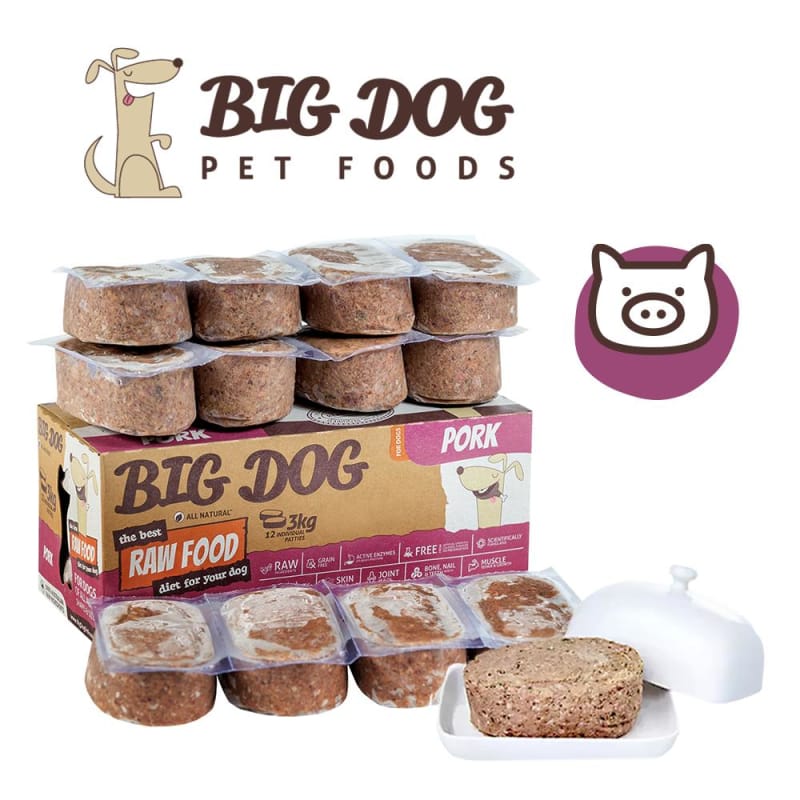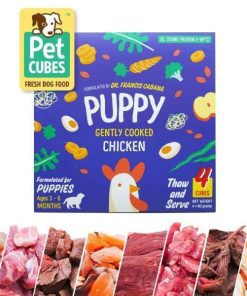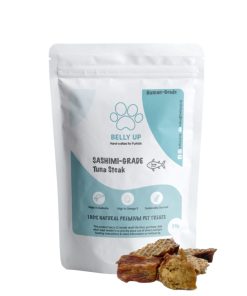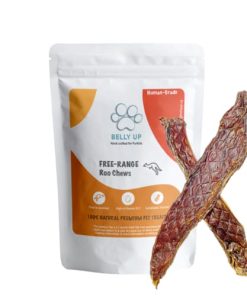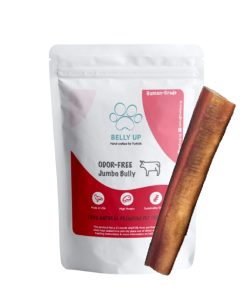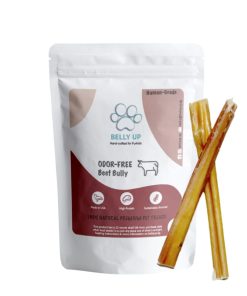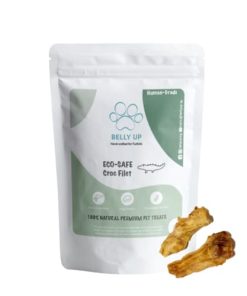[10% OFF] Big Dog BARF Pork Frozen Raw Dog Food 3kg Big Dog
$ 63,85 $ 31,93
RAW Food for dogs (also known as BARF Bones and RAW Foods Diet or Biologically Appropriate Raw Food) is loaded with natural raw ingredients to ensure optimum health, wellbeing and longevity.
*Available in 3kg pack with 12 x 250g individual patties.
View Big Dog BARF Collection.
Ingredients
Pork, finely ground pork bone and cartilage, finely grounded chicken bone, beef offal (liver, kidney, heart), pork heart, seasonal vegetables (broccoli, spinach, bok choy, carrots, celery, capsicum), apples, oranges, ground flaxseed, alfalfa powder, kelp powder, yoghurt, garlic, whole egg and fish oil.
Guaranteed Analysis
Protein 13%,
Fat 13%,
Fibre 1% Maximum,
Calcium 0.7%,
Phosphorus 0.5%,
Calcium: Phosphorus ratio 1:0.7, Ash 2%, Moisture 68%.
Kj/100g = 682 Kj/serve (250g)=1705
Feeding Guide
We recommend feeding adult dogs (12 months +) 2% of their body weight daily. We recommend puppies (generally 12 months and younger), pregnant and lactating dogs or working dogs 4% of their body weight daily. This is based on the nutritional content of our foods.
We recommend feeding adult cats 2-3% of their body weight daily (this is based on an average sized 4kg cat) and kittens 4-6%.
However, our feeding guidelines are a guide and your pets metabolism, breed, size, age and activity level may affect their overall nutritional requirements. Many people wish to replace a raw meal with an appropriate serve of meaty bones for dental health which is an important part of ensuring a healthy raw fed pet. Also taking into account treats as part of the daily energy from food being provided to your pet has an impact.
The important thing to focus on ultimately is that your pet is within a healthy weight range.
It is fine for younger animals (especially puppies) to have extra fat (aka puppy fat) sub 6 months of age. As they grow into adults, its more important to fine tune their diet to suit a healthy weight. A healthy weight can be measured in a number of simple physical ways. Ribs shouldn’t be prominent but should be able to be felt with a thin covering of fat over the top. There should be a visible abdominal tuck and when you look at your pet from above, they should have a visible waist. If the ribs can be seen, increase their daily food allowance, if they no longer have a waist and look like a log from above, decrease their daily food allowance until their waist returns.
Speedy Shipping and Professional Packaging
Our long-standing partnership with UPS FedEx DHL and other global carriers lets us offer a range of shipping services. Our warehouse staff are expertly trained and will wrap your goods in accordance to our precise and precise specifications. Prior to shipping, your goods will be thoroughly inspected and secured. We ship to thousands of customers each day from multiple countries. This shows how we're dedicated to being the largest retailer on the internet. There are distribution centers as well as warehouses located in Europe as well as the USA.
Note: Orders with multiple items will have a distinct processing period for each item.
Prior to shipment, we check the item carefully before shipping. Most orders are delivered within 48 hours. The delivery time is estimated to be between 3 and 7 days.
Returns
The stock is constantly changing. It's not entirely managed by us since we have multiple parties such as the factory and the storage. The actual inventory can fluctuate at any time. It is possible that you will not receive your order once the order has been made.
The period of time is 30 days. If you have passed 30 days by since your purchase however, we're unable to give you a return or exchange.
You are able to return an item in the event that it is not used and is in the same condition as the day you received it. It must also be in the original packaging.
Related products
Grooming & Hygiene
Dog Food & Treats
3% OFF PetCubes Chicken Neck Dehydrated Cat & Dog Treats 100g Pet Cubes
Dog Food & Treats
10% OFF Big Dog BARF Combo Frozen Raw Food For Small Dogs 1.5kg Big Dog
Dog Food & Treats
3% OFF PetCubes Beef Liver Dehydrated Cat & Dog Treats 100g Pet Cubes
Grooming & Hygiene
Grooming & Hygiene
#1 All Systems 27mm Pin Wooden Pet Brush (Black Pad) #1 All Systems
Grooming & Hygiene
#1 All Systems Got Hair Action Smoothing Keratin Shampoo 32oz #1 All Systems
Dog Food & Treats
10% OFF Belly Up Sashimi-Grade Tuna Steak Air-Dried Cat & Dog Treats (2 Sizes) Belly Up
Dog Food & Treats
3 For $190 Boss Dog Chicken Recipe Freeze-dried Dog Food 12oz Boss Dog
Grooming & Hygiene
#1 All Systems Super Cleaning & Conditioning Shampoo 16oz #1 All Systems
Grooming & Hygiene
#1 All Systems Got Hair Action Smoothing Serum & Moisturizer Pet Conditioner 16oz #1 All Systems
Dog Food & Treats
10% OFF Belly Up Roo Chew Air-Dried Dog Treats 70g (Short) Belly Up
Dog Food & Treats
15% OFF Belly Up Odour-Free Beef Jumbo Dog Chew 6” 1pc Belly Up
Grooming & Hygiene
#1 All Systems 35mm Pin Wooden Pet Brush (White Pad) #1 All Systems
Grooming & Hygiene
#1 All Systems Pure Cosmetic Skin & Coat Conditioner 16oz #1 All Systems
Grooming & Hygiene
#1 All Systems Professional Whitening Shampoo 16oz #1 All Systems
Dog Food & Treats
3 For $190 Boss Dog Beef Recipe Freeze-dried Dog Food 12oz Boss Dog
Dog Food & Treats
10% OFF Belly Up Shark Cartilage Air-Dried Dog Treats (2 Sizes) Belly Up
Grooming & Hygiene
#1 All Systems Got Hair Action Humectant Moisturising Conditioner Pet Spray 12oz #1 All Systems
Grooming & Hygiene
#1 All Systems Self-Rinse Conditioning Shampoo & Coat Refresher 16oz #1 All Systems
Grooming & Hygiene
#1 All Systems Ear So Fresh Pet Ear Cleaning Solution 4oz #1 All Systems
Grooming & Hygiene
#1 All Systems 27mm Pin Wooden Pet Brush (White Pad) #1 All Systems
Grooming & Hygiene
#1 All Systems Crisp Coat Botanical Texturizing & Detoxifying Dog Shampoo 16oz #1 All Systems
Grooming & Hygiene
Grooming & Hygiene
Grooming & Hygiene
#1 All Systems Color Enhancing Botanical Conditioner 16oz #1 All Systems
